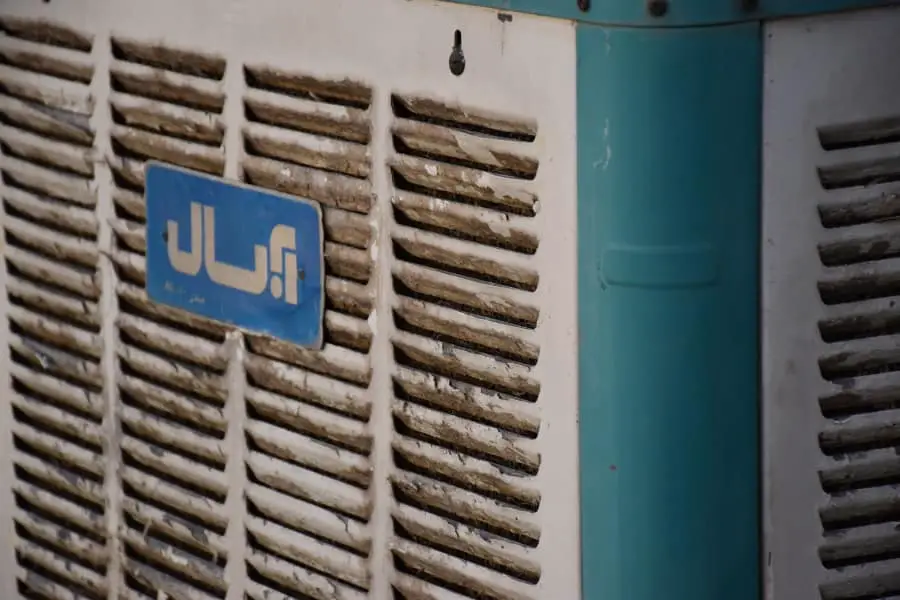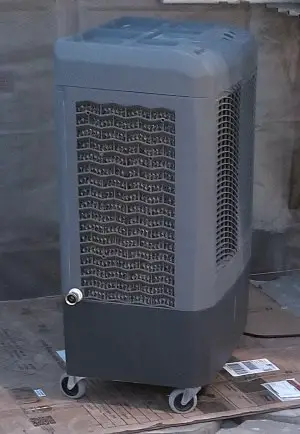
Its that time of the year again, time to turn on the swamp cooler? Only the swamp cooler is not blowing air? What to do? If your swamp cooler is not blowing air, there is likely some common reasons why that can easily be overlooked.
Here’s what to do if your swamp cooler is not blowing air
- Check to see if the heat plate is removed
- Check the motor pump to make sure it is functioning properly
- Replace the belt
- Check the exhaust system inside your home or structure where the unit is housed
- Check the electrical fuses and circuits
- Check the water pumps and cooling pads
- Replace any parts needed
After checking the most common problems, if your swamp cooler still is not working, call a professional in your local area to help you troubleshoot the issue. Since swamp coolers are relatively simple, you can usually fix the problem on your own. Let’s go through each step so you can avoid making that call.
What to Do If Your Swamp Cooler is Not Blowing Air
The most common reason that the swamp cooler is not blowing air is that the heat plate is still installed and needs to be removed. Look right below the swamp cooler onto the stand leading into the central vent of your home. You will see a side that has what looks like a raised edge only on one side. Pull-on that raised edge to remove the winter heat plate.
The second most common reason for no airflow is that the motor or pump is not working correctly. You want to make sure that your swamp cooler motor is running and freely turning the fan. If the belt has broken, then replace it; if the engine is not turning the flywheel, you will need to replace the motor.
If your swamp cooler is blowing air, but the airflow seems slower than usual, then you most likely do not have enough exhaust going. It would be best if you had a window open for the swamp cooler to work correctly. The recommended formula for exhaust is for every 1000 square feet of air, 2 square feet of the exhaust is required. (Read more about that here).
Another common area to look for is the electrical circuit. It may have a short somewhere in the line between the motor and the house switch. IF you find that this is your problem, it is time to contact an electrician to troubleshoot the electrical issue.
Pro-tip
Always check the fuse box every season, sometimes the fuse will trip itself, and this can save you a ton of unnecessary steps.
What is a Swamp Cooler
A swamp cooler, or evaporative cooler in some parts, is a type of air conditioner that is used in dry climates. Places that generally have lower humidity and drier weather use swamp coolers in place of expensive air conditioners, a top of roofs. HGTV does an excellent job of explaining what a swamp cooler is.

The evaporative cooler works by using evaporated water to cool down the air before blowing the air into the area in which you want to cool down. You can have a whole-house evaporative cooler or even smaller versions that only cool one room, an out building such as a garage or greenhouse, or patio.
The outside dry air is acquired through the movement of the fan inside, which sucks the air from the outside through the water-soaked cooling pads. Since the water inside the fiberglass pad is only about 60 degrees at all times, the air is almost instantly cooled about 10 degrees as it passes through the water.
As the air then picks up speed from the fan into the air vents, it then cools more through travel. The airflow comes from outside, and not inside as it does with an air conditioner. Because the airflow is coming from the outside and entering your residence, you need to open a window to get more cooling power out of your swamp cooler. Some people will even place an exhaust fan (You can find them here on Amazon) in a window of their home to push out the warmer air.
Seasonal Maintenance
Swamp Cooler maintenance is probably the most essential part of having your swamp cooler run properly. Several routine maintenance procedures need to be done to ensure that your swamp cooler continues to provide fresh air for years to come.
Twice a year, you want to perform your seasonal maintenance on your swamp cooler. There is winter maintenance and summer maintenance. They are both going to help you prolong the life of your swamp cooler.
The summer maintenance is probably the one that is going to cost the most. You will need to replace any parts that wore out during the winter months. For starters, replace the cooling pads at a minimum every year.
Check the water distribution and pump flow, replace the belt if needed. You want to remove any debris as well that may have accumulated during the winter months. Place the belt back on and re-connect the water lines. At this step, you want to make sure that the water is flowing freely into the pads from the distribution pipes.
In the winter months, maintenance preparation is rather simple. Just turn off the water and power to the swamp cooler and let the cooling pads dry for a day in the sun. You then want to drain any excess water inside the tray and place the winter heat shield in place. Put a cover on it and wrap the pipes with insulation if you live in a climate that freezes regularly.
Here is a quick video that shows you how to perform your summer maintenance on your swamp cooler.
The Importance of Covering it and Turning off the Water
The winter maintenance does several things for your evaporative cooler. Not running your evaporative cooler in temperatures below 65 degrees outside, is going to prolong the life of your swamp cooler and prevent the lines from freezing while the cooler is running.
Water expands as it freezes, which makes it a danger for pipes in the wintertime. This is also bad for your evaporative cooler if the water is left in the pump or the tray. Water in the bin can freeze and expand, causing damage to drainpipes, or causing stress cracks in the casing of the swamp cooler. Ice can also get stuck in the pipes, causing a blockage, or worse, a burst pipe.
Belts can crack and break in the cold, and if wet, can even become fused to the flywheel, which causes permanent damage to the wheel. Most likely if this happens, you will go through a belt a year until you replace the flywheel, it will continuously be thrown off the track.
Covering the Swamp cooler prevents cold moisture from building up inside the swamp cooler. Rain, snow, and even just humidity can also cause issues for your swamp cooler. The rain can freeze onto the pads and cause damage to the swamp cooler. You can find swamp cooler covers on Amazon here.
You want to disconnect the water line and cover the swamp cooler. When you disconnect the waterline, you want to blow out any water that is still left in the waterline. Home Advisor recommends this step as the most critical step in winterizing your swamp cooler.
Final Thoughts/Conclusions
Troubleshooting a swamp cooler may seem like such an impossible task, but when broken down into the components that it requires to work, it is probably the most straightforward HVAC task there is. You don’t have to worry about evaporative coils or overloading circuits.
There are a ton of youtube videos that will show you how to prepare, or even troubleshoot your swamp cooler.
“The world is moving so fast these days that the man who says it can’t be done is generally interrupted by someone doing it.”
― Elbert Hubbard

